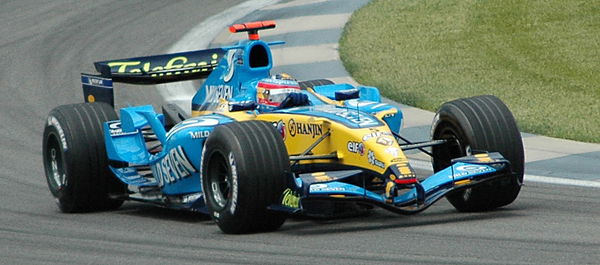

Back in 2005 and 2006, Fernando Alonso became the first person to end Michael Schumacher’s championship streak. Apparently, his surge in form was attributed to a driving style that he developed and used to his advantage. The Spaniard often turned his steering wheel aggressively into corners.
Normally, drivers tend to ‘introduce the car gently’ into the corners to prepare them for the turn. This allows drivers to maintain high grip levels, resulting in higher corner speed and faster lap times. So, they can start turning earlier and enter the corners faster.
However, Fernando Alonso forced the tyres to break traction early and understeer into the corner. Conventional wisdom suggests that this approach is wrong, but Alonso made it work in his championship-winning seasons.
ADVERTISEMENT
Article continues below this ad
ADVERTISEMENT
Article continues below this ad
Breaking down the Fernando Alonso driving style
A lot of factors boils down to the nature of the Renault F1 cars in 2005 and 2006. Apparently, both cars had more rear grip, which was a boon in the traction zones, particularly on the exit of tight corners. Additionally, Renault and Michelin teamed up to develop a special rear suspension to best suit the rear tyres.
Alonso and Renault were the first ones to figure out how to extract the best out of the Michelin tyres. To achieve this, he began to actively introduce understeer into his driving style. Once he flicks the steering wheel, he would wait for the car to regain grip and then remove the excess steering and floor the throttle. Back in those days, the Michelin and Bridgestone tyres were more durable and lasted almost an entire race distance.
ADVERTISEMENT
Article continues below this ad
The secret was to work the tyres hard in the early part of the corner and help them heat up and grip faster. Then, the Renault team would exploit its rear end grip advantage to propel the car out of the corner. Normally, drivers have to figure out braking points, corner speed, where to turn in and hitting the apex.
However, Fernando Alonso had another challenge, figure out when the front end grip would kick in. For that, he had to place a lot of faith in the car’s rear end. While the Renault’s rear was strong, there was still a danger of getting oversteer.
ADVERTISEMENT
ADVERTISEMENT
ADVERTISEMENT
ADVERTISEMENT

